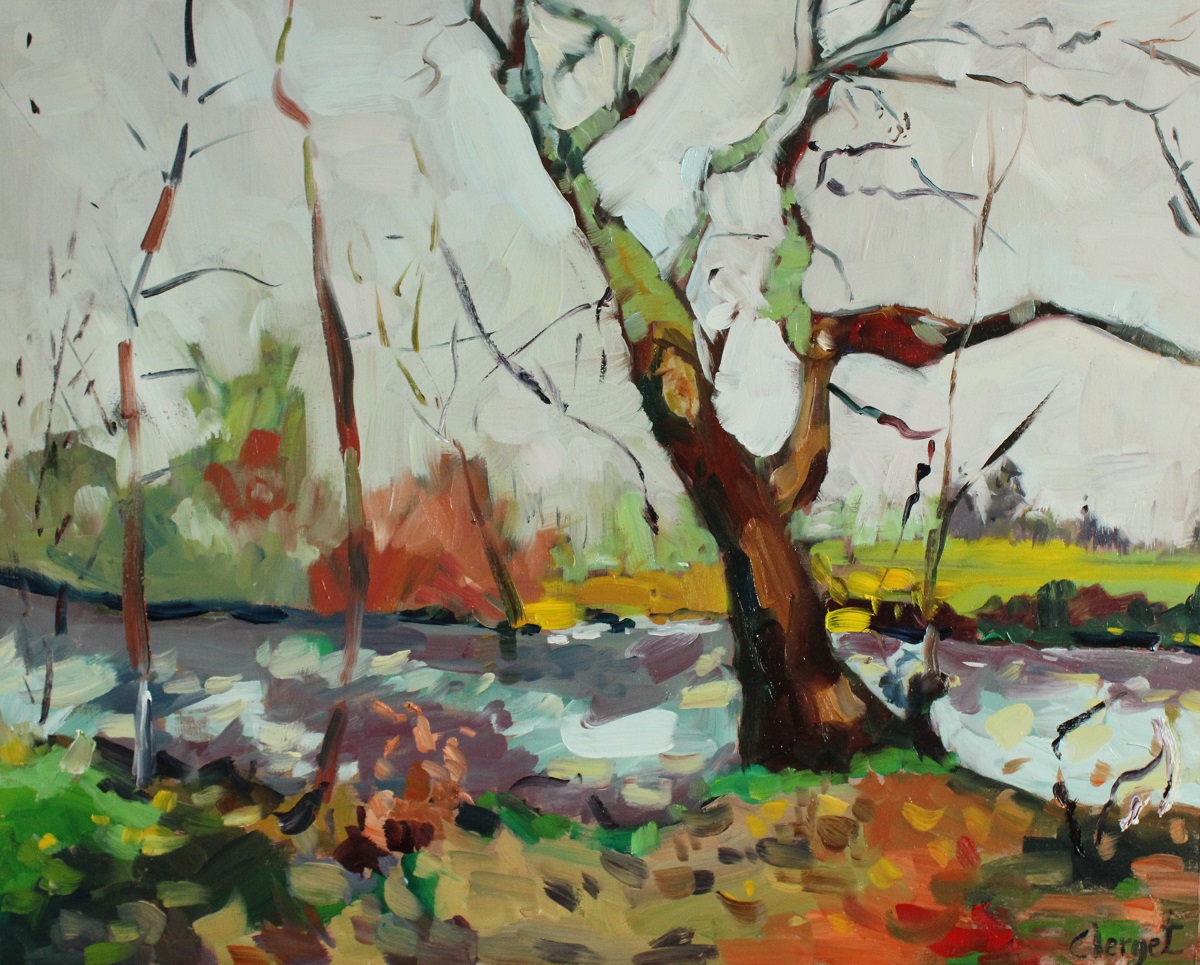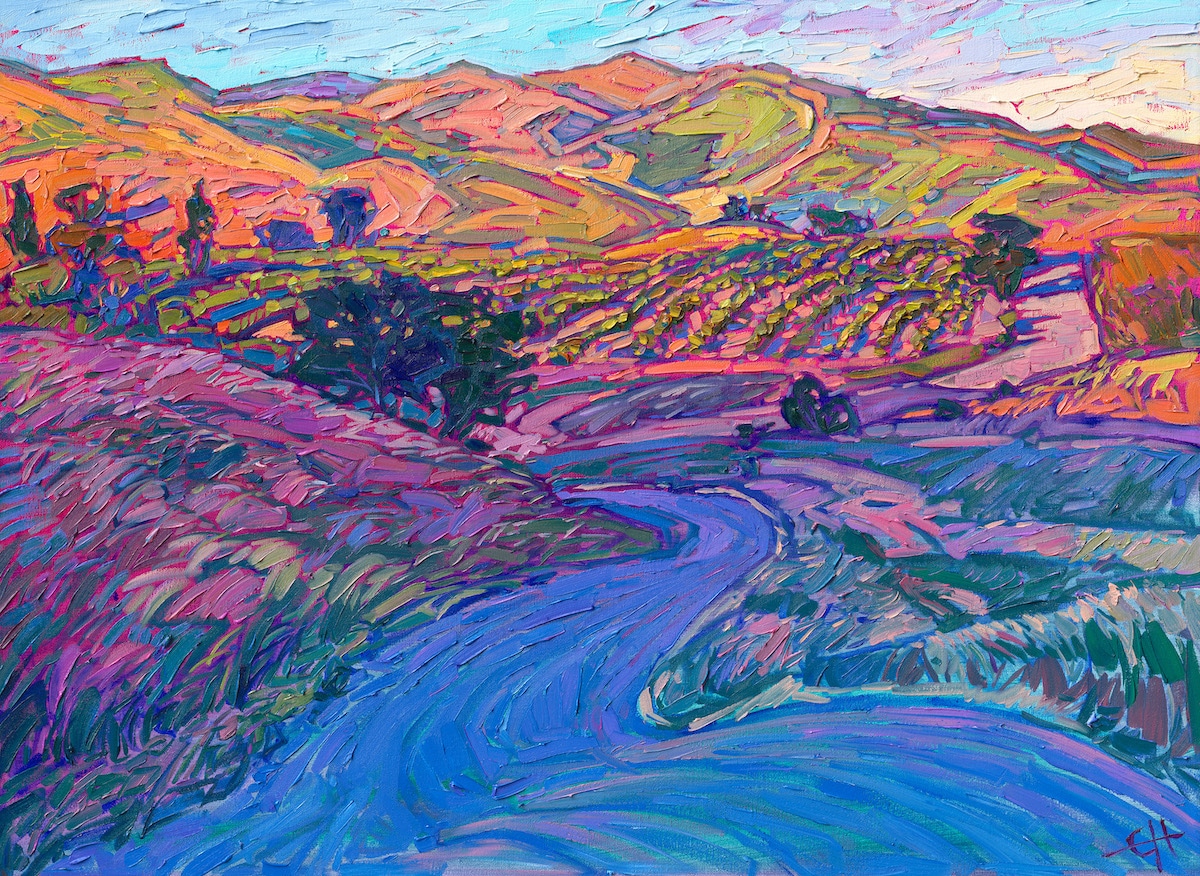
Impressionist art, celebrated for its prowess in encapsulating the very essence of a scene, frequently directs its focus towards the interplay of luminosity and chromatic splendor. Among the recurrent motifs central to this artistic movement is the portrayal of nature, which served as an enthralling muse for many Impressionist luminaries. Within the confines of this discourse, we embark on an odyssey that unravels the enchantment of nature as impeccably transmuted by Impressionist brushes, a journey into a symphony of kaleidoscopic hues and radiant luminance.
The Impressionist Movement and Its Artisans

Emerging in the twilight of the 19th century, Impressionism marked a revolutionary departure from the orthodox conventions of artistry. The Impressionist maestros sought to immortalize ephemeral moments and sensory perceptions, eschewing meticulous verisimilitude. They were consumed by the interplay of light, color, and kinetics, often retreating en plein air to bear witness to nature’s resplendent revelations.
Distinguished Impressionist virtuosos such as Claude Monet, Pierre-Auguste Renoir, Camille Pissarro, and Berthe Morisot, to name but a few, stood as pioneers in the art of encapsulating nature’s enchantment. Their groundbreaking techniques and interpretations resculpted the artistic panorama, fostering a novel outlook for apprehending and encapsulating the natural world.
The Resplendent Palette of Nature

One of the most arresting facets of Impressionist masterpieces lies in their exuberant and harmonious utilization of color. Rather than tethering themselves to traditional chromatic selections, Impressionists dabbled in the alchemy of juxtaposing complementary and discordant hues to engender depth and rouse sentiment. They scrutinized the alchemical interactions of colors under mutable lighting conditions, arresting the ceaseless mutability of nature’s ambiance.
Take, for instance, Claude Monet’s series of Water Lilies paintings. They eloquently manifest his fixation with the ever-shifting tapestry of hues adorning the pond’s surface. The vibrant blues, purples, and greens employed to portray the water’s visage and the ethereal mirroring of the encompassing foliage propel the observer into an oneiric realm.
Read More : 5 Cutting-Edge Music Industry Trends of 2023
The Choreography of Light and Shadow

Impressionist painters were entranced by the fleeting essence of luminosity and its transmutative effect upon the natural milieu. Their discerning gaze unveiled the manifold ways in which light intersected with diverse surfaces, thereby inducing shadows, reflections, and an array of atmospheric phenomena. Through the mastery of their brushwork and the deployment of effulgent colors, they succeeded in elucidating the interplay of light and shadow, infusing their canvases with a sense of dynamism and vitality.
Edgar Degas’ magnum opus, “The Dance Class,” is a quintessential embodiment of his virtuosity in capturing the marriage of light and motion. The graceful ballet dancers bask in a warm, diffused radiance emanating from grandiose windows. The supple brushstrokes and luminous hues conspire to conjure a vision of ethereal beauty, thereby imbuing the scene with palpable vivacity.
Read More : 2023 Music Industry Projections: Ten Expert Forecasts
The Charm of Everyday Vistas
Impressionist luminaries often drew inspiration from the quotidian, exalting the mundane to the extraordinary. Whether it be an expanse of wildflowers, a serene river, or a bustling park, these artists eulogized the charm and serenity that pervade the natural world.
Camille Pissarro’s “The Boulevard Montmartre at Night” serves as a superlative example of this adoration for commonplace scenes. The composition portrays a rain-soaked Parisian thoroughfare, pedestrians cloaked under umbrellas, glistening reflections upon the drenched pavement, and the gentle luminescence of gas lamps suffusing the tableau. Through his strokes, Pissarro captures the intimate allure of a drizzly evening, beckoning the observer to partake in the enchantment of an ostensibly prosaic instant.
Legacy of Impressionist Enchantment
Impressionist virtuosos have etched an indelible mark upon the artistic domain, forever transmuting our apprehension of the natural world. Through their virtuosic command of color, light, and brushwork, they metamorphosed landscapes, seascapes, and everyday vistas into realms of enchantment. Their knack for encapsulating nature’s essence and transient beauty continues to ensnare and galvanize aficionados of the arts to this day.
As we delve into the beguiling realm of Impressionist Nature, we unearth the profound fusion of nature’s enchantment and the artist’s vision. The Impressionists bequeath unto us a poignant reminder: to pause, to scrutinize our surroundings, and to savor the fleeting moments of nature’s opulence. Within their oeuvres, we unearth a reflection of the intricate and harmonious ballet between color, light, and the natural world — an odyssey that beckons us to perceive nature through an entirely novel prism.





More Stories
Business Idea: Online Marketing Services as a Work-From-Home Opportunity
Why Do I Need to Paint My Facility’s Walls
A Thanksgiving Game Idea That the Whole Family Will Enjoy!